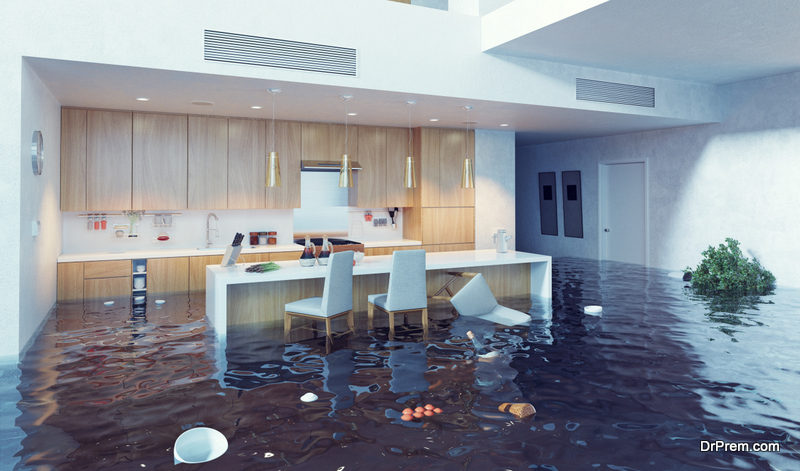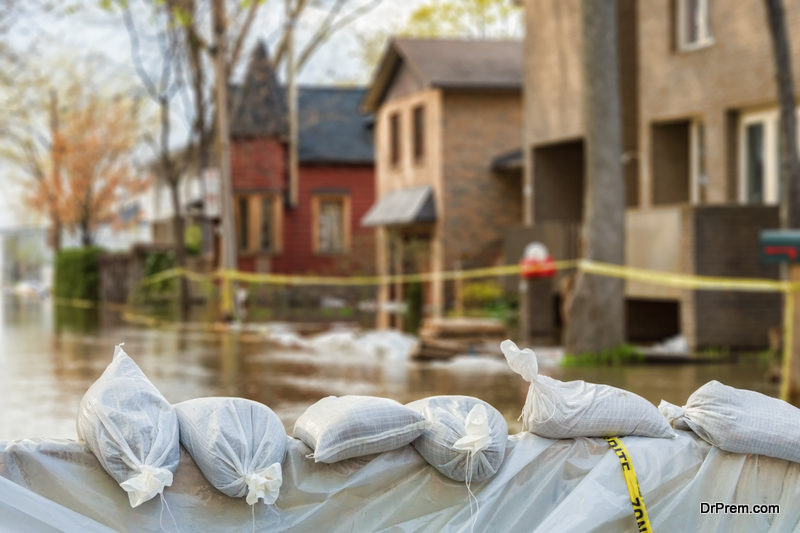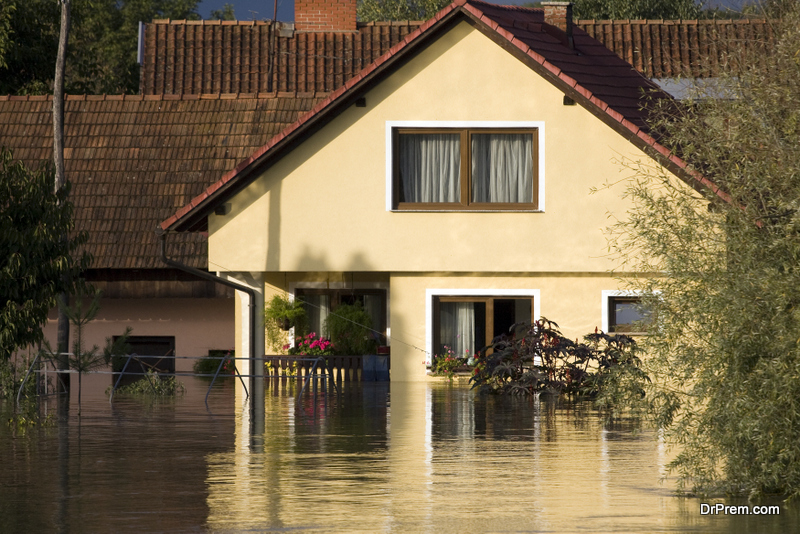Homeowners living near the Great Lakes need to prepare for flooding. The water levels in the flood zone are rising due to excessive rain storms. Those living near the shores in various states fear that the flooding will damage their homes. As a homeowner living in the Great Lakes flood zone, your fears are probably increasing as professionals predict more damaging waves coming your way. While you cannot prevent these disastrous weather conditions, you can protect your home if they occur. Read on to learn the top ways to protect your home in the Great Lakes flood zone.
Get Flood Insurance
 Another way to protect your home in the Great Lakes flood zone is to get flood insurance. Currently, your home insurance may not cover flood damage. Water damage costs homeowners thousands of dollars. Many homeowners do not have the finances to pay for the necessary repairs. These citizens are forced to leave their unlivable homes when they cannot afford the restoration expenses. If you receive protection from the National Flood Insurance Program, you do not have to worry about paying large sums to continue living in your home after a major flood. Instead, you gain coverage and peace of mind all throughout the year. Flood insurance is a must-have policy for homeowners in the Great Lakes region.
Another way to protect your home in the Great Lakes flood zone is to get flood insurance. Currently, your home insurance may not cover flood damage. Water damage costs homeowners thousands of dollars. Many homeowners do not have the finances to pay for the necessary repairs. These citizens are forced to leave their unlivable homes when they cannot afford the restoration expenses. If you receive protection from the National Flood Insurance Program, you do not have to worry about paying large sums to continue living in your home after a major flood. Instead, you gain coverage and peace of mind all throughout the year. Flood insurance is a must-have policy for homeowners in the Great Lakes region.
Install A Sewage Backstop
One of the most effective ways to protect your home from Great Lakes flooding is to install a sewage water backstop. Many homeowners deal with basement flooding in the Great Lakes area. When weather conditions worsen, sewage gets backed up into locals’ basements. The sewer water not only damages belongings, but also leaves a stench in homes. Homeowners who have had drain back up issues in the past should take action immediately. Protect your home in the Great Lakes flood zone by installing a sewage backstop.
Purchase A Sump Pump
 Next, purchase a sump pump to protect your home during flooding in the Great Lakes. Homeowners use sump pumps to get water out of their homes. Since there is always a chance that water will get into your home regardless of the precautionary measures you took, you need to purchase this defense mechanism. Search for a battery-powered sump pump. The cost of these pumps is much lower. Moreover, you can safely change batteries during a flood. You cannot electrically charge appliances safely. Therefore, purchasing a battery-powered sump pump to protect your home in the Great Lakes flood zone is critical.
Next, purchase a sump pump to protect your home during flooding in the Great Lakes. Homeowners use sump pumps to get water out of their homes. Since there is always a chance that water will get into your home regardless of the precautionary measures you took, you need to purchase this defense mechanism. Search for a battery-powered sump pump. The cost of these pumps is much lower. Moreover, you can safely change batteries during a flood. You cannot electrically charge appliances safely. Therefore, purchasing a battery-powered sump pump to protect your home in the Great Lakes flood zone is critical.
Apply Sealants And Coatings
Homeowners succeed in saving their homes from flood damage by applying sealants and coatings as well. Purchase quality sealants and coatings at your local handy-man shop and begin the application process as soon as possible. You want to have enough time to cover your entire home before flooding starts or foundation damage worsens. Apply the sealants and coatings to your foundation. Put it on the walls and windows. Cover your doorways with it as well. When homeowners apply the sealants and coatings correctly, they keep water out of their homes even during the highest water levels. Those who fail to apply these protectors deal with water damaged property due to un-covered leaks. Avoid such an outcome by applying sealants and coatings. Then, you will protect your home in the Great Lakes flood zone.
Implement A Flood Protection System
 Moreover, you can purchase a dam system to protect your home during extreme flooding cases. Homeowners use temporary cofferdams, a water barrier to divert water from your property. This system used the water on site to fill tubes that make the property secure with a flood wall. The materials are highly adaptable and reusable, lowering the cost of preparing for repeat flooding instances. If you are concerned about the great lakes water levels rising again, this could be a temporary or long term solution to protect against flooding.
Moreover, you can purchase a dam system to protect your home during extreme flooding cases. Homeowners use temporary cofferdams, a water barrier to divert water from your property. This system used the water on site to fill tubes that make the property secure with a flood wall. The materials are highly adaptable and reusable, lowering the cost of preparing for repeat flooding instances. If you are concerned about the great lakes water levels rising again, this could be a temporary or long term solution to protect against flooding.
Safeguard Electrical Systems
Also, safeguard electrical systems in your home located in the Great Lakes area. Wet electrical devices lead to an array of problems for homeowners. On top of having to pay for new appliances, homeowners increase their risks of getting electrocuted. Eliminate these risks by storing your electrical systems a foot above the expected flood level. Move devices such as air conditioning units, furnaces and water heaters. Ensure that your switches, sockets and wiring all lay above the predicted flood level as well. By safeguarding your electrical systems, you set yourself up for protecting your home in the Great Lakes flood zone.
Since you live in the Great Lakes area, you need to prepare for flooding. One of the best ways to secure your home and the belongings that it holds is to install a sewage water backstop. You also need to find a good flood insurance program to avoid paying high damage expenses. Apply sealants and coatings to any areas of your home that could let water in. Safeguard electrical systems by moving them a foot above the predicted flood level. In addition, purchase a battery-powered sump pump as a defense mechanism. Implement these strategies to protect your home in the Great Lakes flood zone.
Article Submitted By Community Writer




